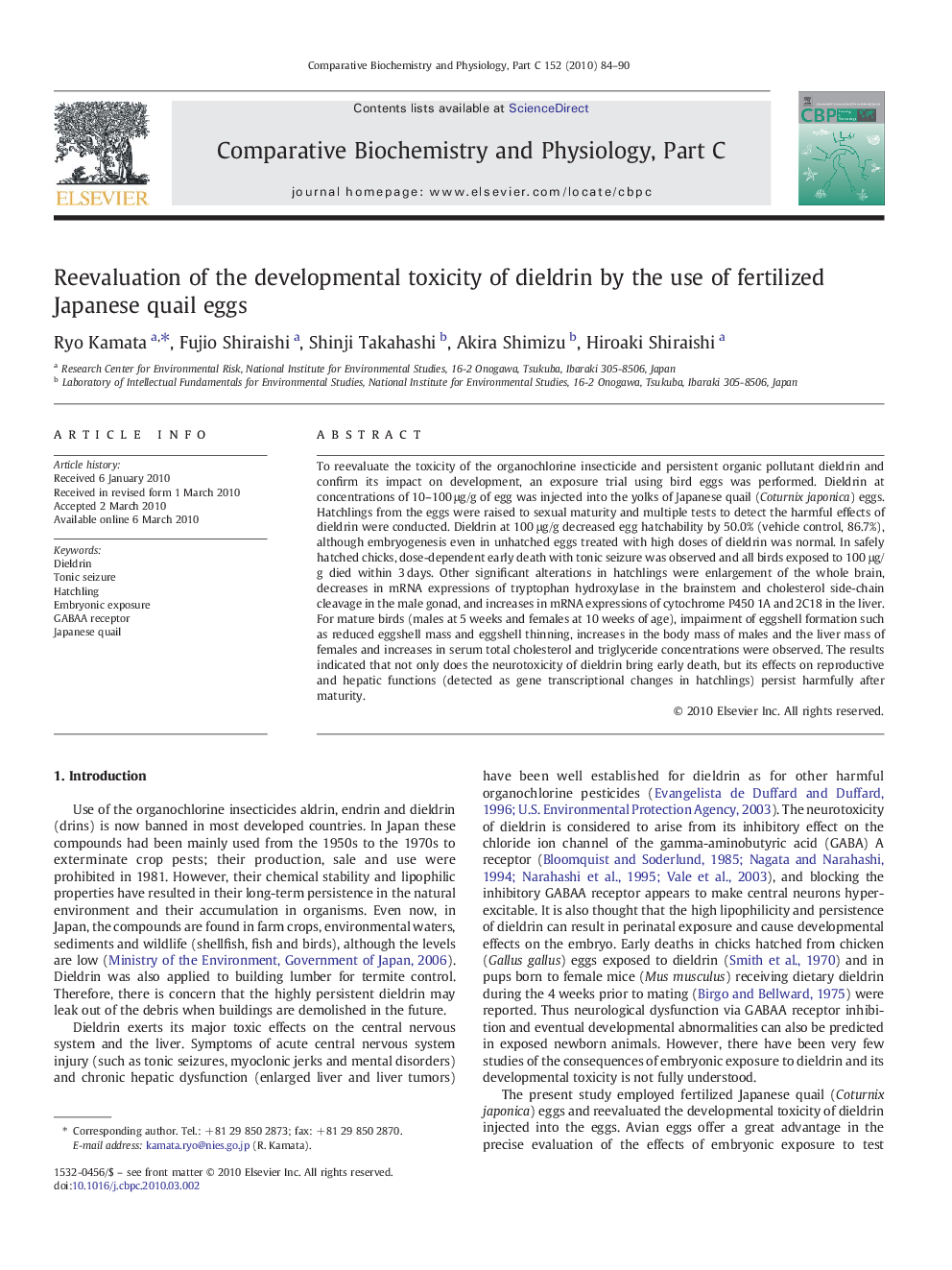| Article ID | Journal | Published Year | Pages | File Type |
|---|---|---|---|---|
| 1977480 | Comparative Biochemistry and Physiology Part C: Toxicology & Pharmacology | 2010 | 7 Pages |
To reevaluate the toxicity of the organochlorine insecticide and persistent organic pollutant dieldrin and confirm its impact on development, an exposure trial using bird eggs was performed. Dieldrin at concentrations of 10–100 μg/g of egg was injected into the yolks of Japanese quail (Coturnix japonica) eggs. Hatchlings from the eggs were raised to sexual maturity and multiple tests to detect the harmful effects of dieldrin were conducted. Dieldrin at 100 μg/g decreased egg hatchability by 50.0% (vehicle control, 86.7%), although embryogenesis even in unhatched eggs treated with high doses of dieldrin was normal. In safely hatched chicks, dose-dependent early death with tonic seizure was observed and all birds exposed to 100 μg/g died within 3 days. Other significant alterations in hatchlings were enlargement of the whole brain, decreases in mRNA expressions of tryptophan hydroxylase in the brainstem and cholesterol side-chain cleavage in the male gonad, and increases in mRNA expressions of cytochrome P450 1A and 2C18 in the liver. For mature birds (males at 5 weeks and females at 10 weeks of age), impairment of eggshell formation such as reduced eggshell mass and eggshell thinning, increases in the body mass of males and the liver mass of females and increases in serum total cholesterol and triglyceride concentrations were observed. The results indicated that not only does the neurotoxicity of dieldrin bring early death, but its effects on reproductive and hepatic functions (detected as gene transcriptional changes in hatchlings) persist harmfully after maturity.
